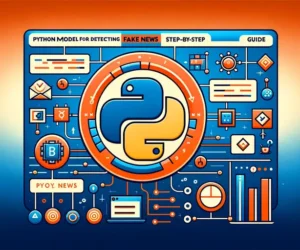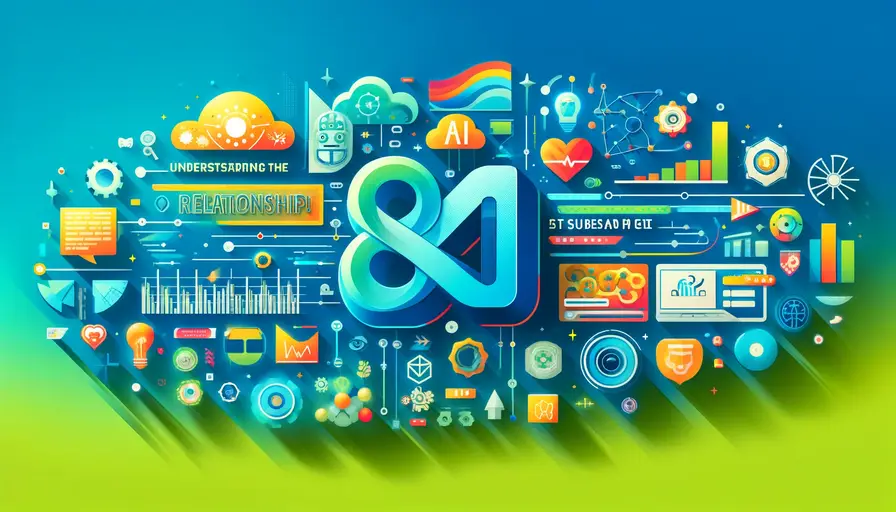
Is Machine Learning a Subset of Artificial Intelligence?

- AI and Machine Learning
- The Relationship Between AI and ML
- Supervised Learning in Machine Learning
- Unsupervised Learning in Machine Learning
- Reinforcement Learning in Machine Learning
- Differences Between AI and ML
- The Role of Data in ML and AI
- Real-World Applications of ML and AI
- The Future of ML and AI
AI and Machine Learning
Artificial Intelligence (AI) and Machine Learning (ML) are often used interchangeably, but they are not the same. AI is a broad field that encompasses various technologies aimed at creating machines capable of performing tasks that require human intelligence. ML, on the other hand, is a subset of AI focused on developing algorithms that enable machines to learn from data.
Defining Artificial Intelligence
Artificial Intelligence (AI) refers to the simulation of human intelligence in machines that are programmed to think and learn. AI systems can perform tasks such as problem-solving, speech recognition, decision-making, and language translation. AI is divided into two categories: narrow AI, which is designed for specific tasks, and general AI, which aims to perform any intellectual task that a human can do.
Defining Machine Learning
Machine Learning (ML) is a subset of AI that involves training algorithms to learn from data and make predictions or decisions without being explicitly programmed. ML algorithms improve their performance over time as they are exposed to more data. Common types of ML include supervised learning, unsupervised learning, and reinforcement learning.
Example: Basic ML Model in Python
Here’s an example of a basic ML model using the Scikit-Learn library in Python:
Popular Pre-Trained Machine Learning Modelsfrom sklearn.datasets import load_iris
from sklearn.model_selection import train_test_split
from sklearn.ensemble import RandomForestClassifier
from sklearn.metrics import accuracy_score
# Load dataset
data = load_iris()
X, y = data.data, data.target
# Split data into training and testing sets
X_train, X_test, y_train, y_test = train_test_split(X, y, test_size=0.2, random_state=42)
# Train a RandomForest model
model = RandomForestClassifier(n_estimators=100)
model.fit(X_train, y_train)
# Make predictions
predictions = model.predict(X_test)
# Evaluate the model
accuracy = accuracy_score(y_test, predictions)
print(f'Model accuracy: {accuracy}')The Relationship Between AI and ML
Understanding the relationship between AI and ML is crucial for grasping the scope and potential of these technologies. ML is a subset of AI, meaning all ML is AI, but not all AI is ML. This distinction helps in understanding their individual contributions to the field of intelligent systems.
How ML Fits into AI
ML as a Subset of AI: Machine Learning is one of the approaches to achieving AI. While AI aims to create systems that can perform tasks requiring human intelligence, ML provides the tools and techniques to build such systems by learning from data. Other approaches to AI include rule-based systems and expert systems, which do not necessarily involve learning from data.
Examples of AI Beyond ML
While ML is a powerful approach, there are other forms of AI that do not rely on learning from data. For instance, Expert Systems are AI programs that simulate the judgment and behavior of a human or an organization with expert-level knowledge. These systems use a set of pre-defined rules to make decisions.
Example: Rule-Based AI System
Here’s an example of a simple rule-based AI system in Python:
Is Machine Learning Necessary Before Deep Learning?def recommend_action(weather, temperature):
if weather == 'rainy' and temperature < 15:
return 'Stay indoors'
elif weather == 'sunny' and temperature > 25:
return 'Go to the beach'
else:
return 'Go for a walk'
# Test the rule-based system
print(recommend_action('rainy', 10)) # Output: Stay indoors
print(recommend_action('sunny', 30)) # Output: Go to the beachSupervised Learning in Machine Learning
Supervised learning is a core component of ML, where algorithms learn from labeled data to make predictions. This type of learning is widely used in various applications, including image classification, speech recognition, and medical diagnosis.
How Supervised Learning Works
Supervised Learning involves training a model on a dataset that includes both the input features and the corresponding labels. The model learns to map inputs to outputs by minimizing the error between its predictions and the actual labels. Once trained, the model can make predictions on new, unseen data.
Applications of Supervised Learning
Supervised learning is used in numerous applications. In Image Classification, models are trained on labeled images to classify new images into predefined categories. In Speech Recognition, models are trained on audio recordings and their transcriptions to convert spoken language into text. In Medical Diagnosis, models are trained on patient data and diagnoses to predict diseases in new patients.
Example: Supervised Learning with Scikit-Learn
Here’s an example of using supervised learning for image classification in Python:
The Role of Clustering in Machine Learningfrom sklearn.datasets import load_digits
from sklearn.model_selection import train_test_split
from sklearn.linear_model import LogisticRegression
from sklearn.metrics import classification_report
# Load dataset
digits = load_digits()
X, y = digits.data, digits.target
# Split data into training and testing sets
X_train, X_test, y_train, y_test = train_test_split(X, y, test_size=0.2, random_state=42)
# Train a LogisticRegression model
model = LogisticRegression(max_iter=10000)
model.fit(X_train, y_train)
# Make predictions
predictions = model.predict(X_test)
# Evaluate the model
report = classification_report(y_test, predictions)
print(report)Unsupervised Learning in Machine Learning
Unsupervised learning is another essential component of ML, where algorithms learn from unlabeled data. This type of learning is used for tasks such as clustering, association, and dimensionality reduction.
How Unsupervised Learning Works
Unsupervised Learning involves training a model on a dataset that does not include labels. The model identifies patterns and structures within the data by grouping similar data points or reducing the dimensionality of the data. This approach is useful for exploratory data analysis and discovering hidden patterns.
Applications of Unsupervised Learning
Unsupervised learning is used in various applications. In Clustering, models group similar data points together, which is useful in market segmentation and image compression. In Association, models identify relationships between variables, which is useful in market basket analysis. In Dimensionality Reduction, models reduce the number of features while preserving important information, which is useful in data visualization and preprocessing.
Example: Unsupervised Learning with Scikit-Learn
Here’s an example of using unsupervised learning for clustering in Python:
Unleashing Machine Learning AI: Explore Cutting-Edge Servicesfrom sklearn.datasets import load_iris
from sklearn.cluster import KMeans
import matplotlib.pyplot as plt
# Load dataset
data = load_iris()
X = data.data
# Train a KMeans model
kmeans = KMeans(n_clusters=3, random_state=42)
kmeans.fit(X)
# Predict cluster labels
labels = kmeans.labels_
# Plot clusters
plt.scatter(X[:, 0], X[:, 1], c=labels, cmap='viridis')
plt.xlabel('Feature 1')
plt.ylabel('Feature 2')
plt.title('KMeans Clustering')
plt.show()Reinforcement Learning in Machine Learning
Reinforcement learning is a type of ML where agents learn by interacting with their environment and receiving rewards or penalties. This approach is used for tasks that require sequential decision-making.
How Reinforcement Learning Works
Reinforcement Learning involves training an agent to make decisions by maximizing cumulative rewards. The agent learns by taking actions in an environment and receiving feedback in the form of rewards or penalties. The goal is to learn a policy that maps states to actions to maximize the total reward over time.
Applications of Reinforcement Learning
Reinforcement learning is used in various applications. In Robotics, agents learn to perform tasks such as navigation and manipulation. In Gaming, agents learn to play games at a superhuman level, such as in the case of AlphaGo. In Autonomous Vehicles, agents learn to drive safely by interacting with a simulated environment.
Example: Reinforcement Learning with OpenAI Gym
Here’s an example of using reinforcement learning for a simple task in Python:
Is Cheap Machine Learning AI Effective for Small Businesses?import gym
import numpy as np
# Create environment
env = gym.make('CartPole-v1')
state = env.reset()
# Initialize Q-table
q_table = np.zeros([env.observation_space.shape[0], env.action_space.n])
# Set hyperparameters
alpha = 0.1
gamma = 0.99
epsilon = 0.1
# Train the agent
for episode in range(1000):
state = env.reset()
done = False
while not done:
if np.random.uniform(0, 1) < epsilon:
action = env.action_space.sample()
else:
action = np.argmax(q_table[state])
next_state, reward, done, _ = env.step(action)
q_table[state, action] = q_table[state, action] + alpha * (reward + gamma * np.max(q_table[next_state]) - q_table[state, action])
state = next_state
# Evaluate the agent
total_rewards = []
for episode in range(100):
state = env.reset()
done = False
total_reward = 0
while not done:
action = np.argmax(q_table[state])
next_state, reward, done, _ = env.step(action)
total_reward += reward
state = next_state
total_rewards.append(total_reward)
print(f'Average reward over 100 episodes: {np.mean(total_rewards)}')Differences Between AI and ML
While AI and ML are closely related, they have distinct differences. Understanding these differences is essential for appreciating the scope and capabilities of each field.
AI as an Umbrella Term
AI as an Umbrella Term: AI is a broad field that encompasses various technologies aimed at creating intelligent machines. These technologies include ML, rule-based systems, expert systems, and more. AI aims to mimic human intelligence in all its forms, from perception to reasoning.
ML as a Tool for AI
ML as a Tool for AI: ML is one of the tools used to achieve AI. It provides the algorithms and techniques to create systems that can learn from data and improve over time. ML is particularly effective for tasks that involve large amounts of data and complex patterns, such as image recognition and natural language processing.
Example: Comparing AI and ML
Here’s an example of comparing AI and ML through different approaches:
Understanding Long Short Term Memory (LSTM) in Machine Learning# AI Approach: Rule-Based System
def rule_based_action(weather, temperature):
if weather == 'rainy' and temperature < 15:
return 'Stay indoors'
elif weather == 'sunny' and temperature > 25:
return 'Go to the beach'
else:
return 'Go for a walk'
# ML Approach: Logistic Regression
from sklearn.linear_model import LogisticRegression
from sklearn.datasets import load_iris
from sklearn.model_selection import train_test_split
import numpy as np
# Load dataset
data = load_iris()
X, y = data.data, data.target
# Train logistic regression model
model = LogisticRegression(max_iter=200)
model.fit(X, y)
# Make predictions
predictions = model.predict(X)
print(f'Predictions: {np.unique(predictions)}')The Role of Data in ML and AI
Data plays a crucial role in both ML and AI. High-quality data is essential for training accurate and robust models. The process of collecting, preprocessing, and managing data is critical for the success of any ML or AI project.
Importance of Data Quality
Data Quality: High-quality data is free from errors, inconsistencies, and biases. It accurately represents the real-world phenomena being modeled. Poor quality data can lead to inaccurate models and unreliable predictions.
Data Preprocessing
Data Preprocessing: Before training a model, data must be cleaned and preprocessed. This includes handling missing values, normalizing features, and transforming categorical variables into numerical ones. Proper preprocessing ensures that the data is in a suitable format for the model to learn effectively.
Example: Data Preprocessing in Python
Here’s an example of preprocessing data for a machine learning model:
import pandas as pd
from sklearn.preprocessing import StandardScaler, OneHotEncoder
from sklearn.compose import ColumnTransformer
from sklearn.pipeline import Pipeline
from sklearn.impute import SimpleImputer
# Load dataset
data = pd.read_csv('data.csv')
# Define preprocessing pipeline
numeric_features = ['age', 'income']
numeric_transformer = Pipeline(steps=[
('imputer', SimpleImputer(strategy='mean')),
('scaler', StandardScaler())
])
categorical_features = ['gender', 'occupation']
categorical_transformer = Pipeline(steps=[
('imputer', SimpleImputer(strategy='constant', fill_value='missing')),
('onehot', OneHotEncoder(handle_unknown='ignore'))
])
preprocessor = ColumnTransformer(
transformers=[
('num', numeric_transformer, numeric_features),
('cat', categorical_transformer, categorical_features)
])
# Fit and transform data
data_preprocessed = preprocessor.fit_transform(data)
print(data_preprocessed)Real-World Applications of ML and AI
Both ML and AI have a wide range of real-world applications that demonstrate their transformative potential across various industries. Understanding these applications helps in appreciating the practical impact of these technologies.
Healthcare
Healthcare: AI and ML are used in healthcare for tasks such as diagnosing diseases, predicting patient outcomes, and personalizing treatment plans. These technologies help in improving patient care and operational efficiency.
Finance
Finance: In finance, AI and ML are used for fraud detection, credit scoring, algorithmic trading, and risk management. These applications help in enhancing security, optimizing investments, and making data-driven decisions.
Example: AI in Healthcare
Here’s an example of using ML for disease prediction in Python:
from sklearn.datasets import load_breast_cancer
from sklearn.model_selection import train_test_split
from sklearn.ensemble import RandomForestClassifier
from sklearn.metrics import accuracy_score
# Load dataset
data = load_breast_cancer()
X, y = data.data, data.target
# Split data into training and testing sets
X_train, X_test, y_train, y_test = train_test_split(X, y, test_size=0.2, random_state=42)
# Train a RandomForest model
model = RandomForestClassifier(n_estimators=100)
model.fit(X_train, y_train)
# Make predictions
predictions = model.predict(X_test)
# Evaluate the model
accuracy = accuracy_score(y_test, predictions)
print(f'Model accuracy: {accuracy}')The Future of ML and AI
The future of ML and AI holds immense potential, with advancements in algorithms, computing power, and data availability driving innovation. Understanding the trends and challenges in this field helps in preparing for the future.
Advancements in Algorithms
Advancements in Algorithms: Ongoing research in ML and AI is leading to the development of more efficient and effective algorithms. These advancements enable models to learn from less data, make more accurate predictions, and handle more complex tasks.
Increased Computing Power
Increased Computing Power: The availability of powerful GPUs and cloud computing resources is accelerating the training and deployment of ML and AI models. This increased computing power allows for more sophisticated models and faster experimentation.
Example: Future Trends in AI
Here’s an example of exploring future trends in AI, such as reinforcement learning and neural architecture search:
import tensorflow as tf
# Define a simple reinforcement learning environment
env = gym.make('CartPole-v1')
# Create a deep Q-learning model
model = tf.keras.models.Sequential([
tf.keras.layers.Dense(24, activation='relu', input_shape=(4,)),
tf.keras.layers.Dense(24, activation='relu'),
tf.keras.layers.Dense(env.action_space.n, activation='linear')
])
# Compile the model
model.compile(optimizer=tf.keras.optimizers.Adam(learning_rate=0.001), loss='mse')
# Train the model using a reinforcement learning algorithm
# Note: This is a simplified example and may require additional code for a complete implementationMachine learning is indeed a subset of artificial intelligence, but its significance and impact extend far beyond this relationship. ML provides the tools and techniques to build intelligent systems that can learn from data and improve over time. Understanding the differences and connections between AI and ML is crucial for leveraging their full potential. As these technologies continue to evolve, they will undoubtedly drive innovation and transformation across various industries, making it essential to stay informed and adapt to the advancements in this dynamic field.
If you want to read more articles similar to Is Machine Learning a Subset of Artificial Intelligence?, you can visit the Artificial Intelligence category.



You Must Read